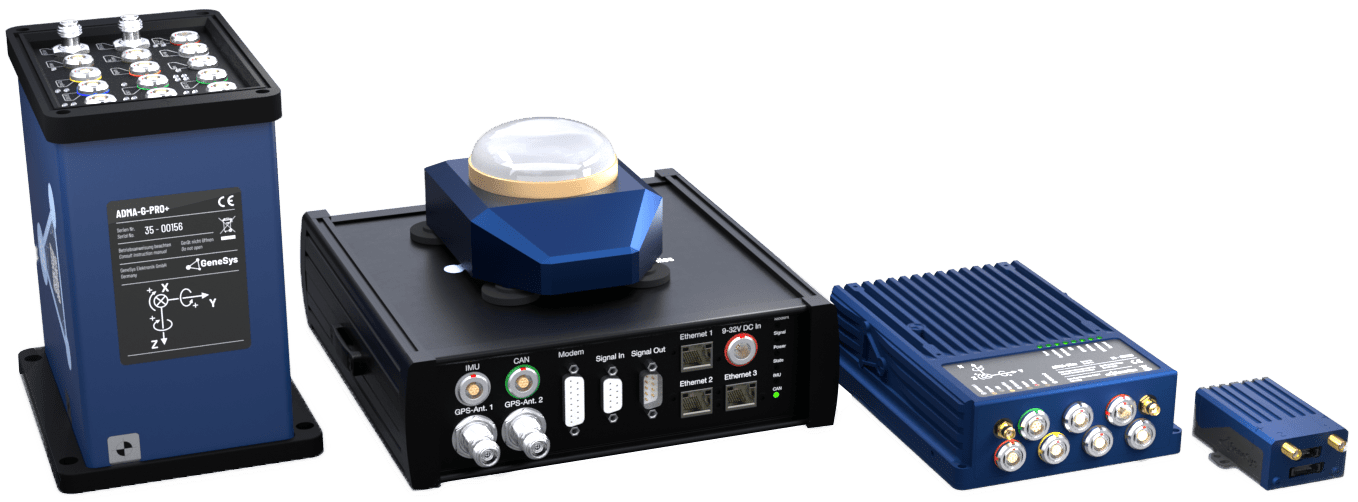All models of the ADMA family can be ordered as single or dual GNSS antenna version.
Single GNSS antenna version
For the most vehicle testing applications, a single antenna version is sufficient.
The combination of INS and GNSS allows precise output of the yaw angle at low speed and stationery maneuvers, thanks intelligent algorithmic and a standstill detection.
Dual GNSS antenna version
The dual GNSS antenna version allows the output of a precise yaw angle even without prior initialization of the ADMA. This feature is important for very slow vehicles or at low friction tests, such as on ice.
When to use Dual Antenna?
In dynamic test scenarios, a single-antenna solution outperforms a dual-antenna setup. Dual antennas are recommended only for low-speed scenarios. The following applications benefit from dual-antenna use:
- Parking Scenarios
- Really low speed scenarios
- Robotic scenarios without initialization procedure
As soon as the driver is able to drive straight ahead for 3 seconds with a velocity above the min. velocity for heading control we recommend using single antenna.



